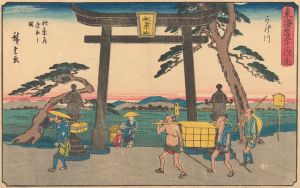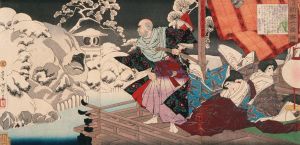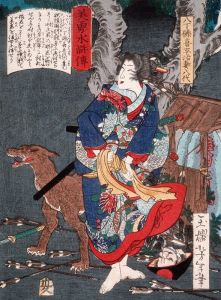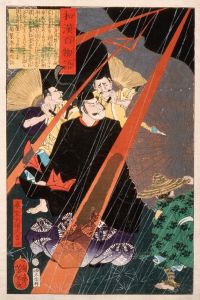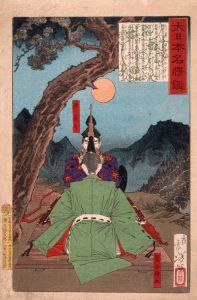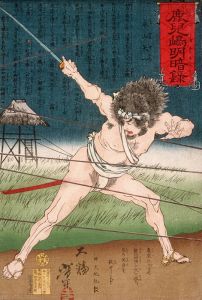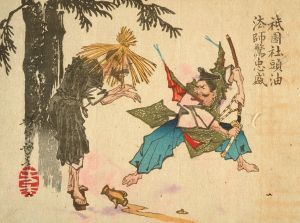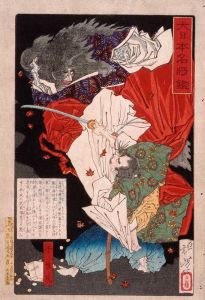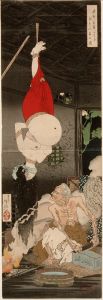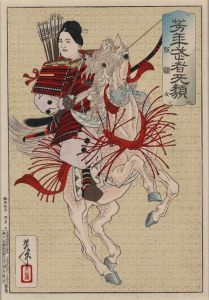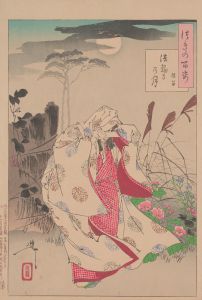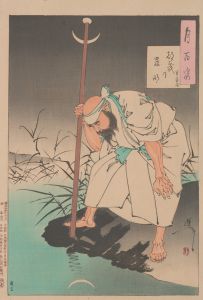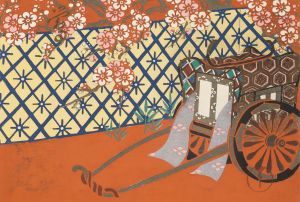
Yoshida Chūzaemon Fujiwara Kanesuke
A hand-painted replica of Tsukioka Yoshitoshi’s masterpiece Yoshida Chūzaemon Fujiwara Kanesuke, meticulously crafted by professional artists to capture the true essence of the original. Each piece is created with museum-quality canvas and rare mineral pigments, carefully painted by experienced artists with delicate brushstrokes and rich, layered colors to perfectly recreate the texture of the original artwork. Unlike machine-printed reproductions, this hand-painted version brings the painting to life, infused with the artist’s emotions and skill in every stroke. Whether for personal collection or home decoration, it instantly elevates the artistic atmosphere of any space.
Tsukioka Yoshitoshi was a prominent Japanese artist known for his work in the ukiyo-e genre, a style of woodblock printing and painting that flourished in Japan from the 17th through the 19th centuries. Yoshitoshi is often celebrated for his innovative approach and his ability to capture the complexities of human emotion and the supernatural in his art. One of his notable works is "Yoshida Chūzaemon Fujiwara Kanesuke," which is part of his series "New Forms of Thirty-Six Ghosts" (新形三十六怪撰, Shinkei Sanjūrokkaisen).
"Yoshida Chūzaemon Fujiwara Kanesuke" depicts a historical or legendary figure, as was common in Yoshitoshi's work. The series "New Forms of Thirty-Six Ghosts" was created towards the end of Yoshitoshi's career, between 1889 and 1892, and it reflects his mature style. This series is known for its exploration of ghostly and supernatural themes, drawing from Japanese folklore, history, and kabuki theater.
Yoshitoshi's work often featured dynamic compositions and a keen attention to detail, which helped to convey the eerie and otherworldly atmosphere typical of ghost stories. His use of color and line work was instrumental in creating a sense of movement and emotion, allowing viewers to engage deeply with the depicted scenes.
The figure of Yoshida Chūzaemon Fujiwara Kanesuke, like many in Yoshitoshi's ghost series, is likely drawn from historical or literary sources. Yoshitoshi had a talent for blending historical fact with myth and legend, creating images that were both educational and entertaining for his audience. His prints often served as a medium for storytelling, providing visual narratives that complemented the rich oral and written traditions of Japan.
Yoshitoshi's work came at a time of great change in Japan, during the Meiji Restoration, when the country was opening up to Western influences and undergoing rapid modernization. Despite these changes, Yoshitoshi remained committed to traditional Japanese themes and techniques, though he was not entirely immune to the influences of the time. His work is often seen as a bridge between the past and the present, preserving the cultural heritage of Japan while also reflecting the new realities of his era.
The "New Forms of Thirty-Six Ghosts" series, including "Yoshida Chūzaemon Fujiwara Kanesuke," is considered one of Yoshitoshi's masterpieces. It showcases his ability to adapt traditional ukiyo-e techniques to express complex themes and emotions, ensuring his place as one of the last great masters of the ukiyo-e tradition. His influence can be seen in the works of later artists and in the continued appreciation of ukiyo-e prints both in Japan and around the world.
Yoshitoshi's legacy is marked by his dedication to his craft and his ability to capture the spirit of his subjects, whether they be historical figures, mythical creatures, or spectral apparitions. His work remains a testament to the enduring power of visual storytelling and the rich cultural tapestry of Japan.





